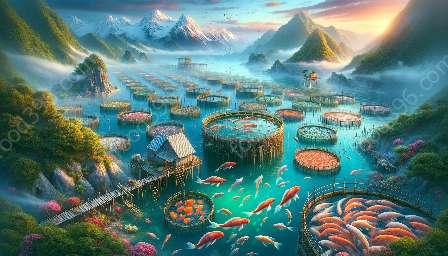Introduction to Aquaculture Techniques for Seafood Species
Aquaculture, also known as fish farming, is the practice of cultivating aquatic organisms under controlled conditions. When it comes to seafood species, aquaculture techniques play a crucial role in meeting the growing demand for seafood while reducing the pressure on wild fish stocks. In this article, we will delve into the various aquaculture techniques used for seafood species, their impact on the environment, and their relevance to the fields of aquaculture of seafood species and seafood science.
Aquaculture of Seafood Species
Aquaculture of seafood species involves the rearing and farming of various marine and freshwater species for human consumption. This process requires an understanding of the specific requirements and behaviors of different seafood species, as well as the application of appropriate techniques to ensure their health and optimal growth. The development of efficient aquaculture techniques is essential for the sustainable production of seafood, and it is closely linked to the broader field of aquaculture science.
Sustainable Aquaculture Techniques
Sustainable aquaculture techniques are vital for minimizing the environmental impact of seafood production. One approach is the implementation of integrated multi-trophic aquaculture, which involves cultivating multiple species in the same environment to create balanced ecosystems. This method reduces waste and the risk of diseases, leading to more sustainable production. Another technique is the use of recirculating aquaculture systems, which minimize water usage and waste discharge, making the process more environmentally friendly.
Effective Production Methods
Efficient production methods are essential for meeting the increasing demand for seafood. High-density recirculating systems and cage aquaculture are effective for producing high volumes of seafood species in a controlled environment. Additionally, the use of selective breeding and genetic improvement programs can enhance the growth rate and resistance to diseases in farmed seafood species, ultimately improving production efficiency and sustainability.
Seafood Science and Aquaculture Techniques
Seafood science encompasses the study of seafood processing, safety, quality, and nutrition. Aquaculture techniques directly impact seafood science by influencing the quality and safety of the final product. For example, the use of specific feeding regimes, water quality management, and disease prevention strategies in aquaculture directly contribute to the nutritional value and safety of seafood products. Understanding the relationship between aquaculture techniques and seafood science is crucial for ensuring the production of high-quality, nutritious seafood for consumers.
Conclusion
Aquaculture techniques for seafood species are essential for meeting the global demand for seafood in a sustainable manner. By integrating effective and environmentally responsible production methods, aquaculture contributes to the conservation of wild fish stocks and the provision of high-quality seafood products. Understanding the interplay between aquaculture of seafood species and seafood science provides valuable insights into optimizing production processes and ensuring the delivery of safe and nutritious seafood to consumers.
References
- Froehlich, H. E., Gentry, R. R., & Halpern, B. S. (2018). Global change in marine aquaculture production potential under climate change. Nature Ecology & Evolution, 2(12), 1745-1750.
- Tacon, A. G. J., & Metian, M. (2008). Global overview on the use of fish meal and fish oil in industrially compounded aquafeeds: Trends and future prospects. Aquaculture, 285(1-4), 146-158.
- Boyd, C. E. (2001). Water quality: An introduction. Springer Science & Business Media.

